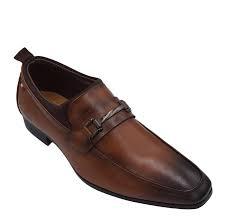Fresh Air Ventilation System: Key Features and Advantages

Air ventilation systems are integral to maintaining healthy indoor spaces by ensuring continuous outdoor airflow into buildings. These systems replace stale air inside homes with fresh, clean air from outside, helping to regulate temperature and humidity levels. With increasing awareness of the importance of indoor air quality, more people are looking to these systems as a solution for a healthier living environment.
This blog aims to provide an in-depth understanding of the different types of fresh air ventilation system, its essential components, and its numerous benefits to residential and commercial properties. It will also highlight their role in energy efficiency and emerging trends in the industry.
Types of Air ventilation systems
Air ventilation systems are categorised into three primary types: natural, mechanical, and hybrid systems. Natural ventilation leverages air movement through openings such as windows and vents. This method is cost-effective and energy-efficient but may lack consistency in certain conditions. Mechanical ventilation employs fans and ducts to circulate air, ensuring controlled and stable air quality.
These systems are particularly effective in environments where natural ventilation is insufficient. Hybrid systems combine the principles of natural and mechanical ventilation, maximising the advantages of both. This approach allows flexibility and efficiency, making it a versatile option for various applications.
Key Components of Fresh Air System for Home
A fresh air system for home comprises several crucial components working together to ensure optimal indoor air quality. Central to these systems are air handling units, which regulate and distribute air throughout the building. These units often include fans, dampers, and controls to manage airflow efficiently. Ductwork forms the network through which air travels to different areas, ensuring it reaches all parts of the home.
Filters play a vital role in trapping dust, pollen, and other contaminants, ensuring that only clean air circulates. Purifiers can also be integrated to remove finer particles and even some microorganisms. Additionally, ventilation systems may include sensors and automated controls to adjust airflow based on real-time indoor conditions, enhancing performance and energy efficiency. By incorporating these key components, air ventilation systems maintain a comfortable and healthy living environment.
Benefits of Using Air ventilation systems
Air ventilation systems offer significant advantages that enhance indoor environments. One of the most critical benefits is the reduction of indoor air pollutants, including allergens and volatile organic compounds (VOCs). This improvement in air quality can lead to better respiratory health and overall well-being. Additionally, these systems help to control indoor humidity levels, reducing the likelihood of mould growth and dampness, which can damage property and negatively impact health.
By facilitating the continuous exchange of indoor and outdoor air, these systems ensure that occupants have access to a steady supply of fresh air, promoting a more comfortable living or working environment. Furthermore, air ventilation systems can help eliminate unpleasant odours, ensuring that indoor spaces remain fresh and inviting.
Energy efficiency is another noteworthy benefit. Advanced systems, such as those with heat recovery capabilities, reduce the energy required for heating and cooling by transferring heat between incoming and outgoing air. This results in lower energy consumption and cost savings for property owners. Consequently, air ventilation systems improve air quality and contribute to more sustainable and cost-effective building management.
How Air Exchanger for House Works
An air exchanger for house operates by continuously cycling air indoors and outdoors, ensuring a steady supply of fresh air while removing stale indoor air. The system typically consists of two separate air streams: one that brings fresh outdoor air and another that expels indoor air. These air streams pass through a heat exchanger, which transfers thermal energy between the outgoing and incoming air without mixing the two. This process helps maintain indoor temperatures, making the system energy efficient.
Many air exchangers also incorporate filters to remove contaminants from the incoming air, enhancing indoor air quality. Some models also include humidity control features to maintain optimal indoor moisture levels, preventing mould growth and dampness. The system is designed to work continuously, providing consistent ventilation and improving the overall indoor environment.
Energy Efficiency and Cost Savings
Air ventilation systems are designed to enhance energy efficiency in buildings. By incorporating heat recovery ventilation (HRV) technology, these systems can transfer thermal energy from outgoing stale air to incoming fresh air. This process reduces the demand for heating and cooling systems, leading to significant energy savings. Advanced ventilation systems often feature variable speed fans and intelligent controls, allowing for precise adjustments based on real-time indoor conditions.
This optimised operation minimises energy consumption while maintaining a comfortable indoor environment. Additionally, some systems are integrated with energy-efficient filters and purifiers, ensuring clean air without excessive power use. By reducing reliance on artificial climate control, these systems contribute to lower energy bills and a smaller carbon footprint.
Maintenance of Home Air Ventilation System
Regular upkeep is necessary to ensure the home air ventilation system operates efficiently and effectively. Key maintenance tasks include cleaning the air handling units to remove dust and debris that can obstruct airflow. Inspecting ductwork for leaks is also essential, as any breaches can compromise system performance. Filters should be replaced or cleaned at recommended intervals to maintain optimal air quality and prevent the system from becoming overworked.
It is equally important to check the functionality of fans and controls to ensure they are operating correctly. Some systems may also require periodic lubrication of mechanical components to reduce wear and tear. By attending to these maintenance activities, the longevity and efficiency of the ventilation system can be preserved, contributing to a healthier indoor environment.
Common Challenges and Solutions
Ventilation Challenges
While beneficial, air ventilation systems can encounter various operational difficulties. A common problem is insufficient ventilation, often due to incorrectly sized or installed systems. Ensuring proper design and professional installation can alleviate this issue.
Energy Efficiency and Maintenance
Another concern is energy inefficiency, which may arise if systems run continuously at high capacity, leading to wasted energy. This can be managed by integrating energy-efficient components and innovative controls that adjust based on current needs. Noise is also a worry, especially in mechanical systems where fans can be loud. Opting for quieter models or using sound-reducing materials can lower noise levels.
Maintenance is vital, as neglected systems may suffer from reduced performance and increased wear. Regular cleaning, replacing filters, and inspections are crucial for maintaining efficiency. Moreover, incorporating advanced filtration can address poor air quality, effectively removing contaminants. Tackling these issues through careful design, regular upkeep, and embracing modern technologies can ensure air ventilation systems function optimally.
Future Trends in Fresh Air Ventilation
Future trends in fresh air ventilation are increasingly focused on integrating advanced technologies to enhance performance and efficiency. One notable development is incorporating smart home systems, allowing ventilation to be controlled and monitored through mobile devices and automated home networks. This facilitates optimal air quality management with minimal manual intervention.
Additionally, advanced sensors are on the rise, enabling systems to detect air quality changes in real-time and adjust ventilation rates accordingly. With innovations such as low-power fans and enhanced heat exchangers, energy-efficient designs continue to gain prominence. Integrating renewable energy sources, like solar power, is also being explored to make these systems more sustainable.
Another emerging trend is the focus on modular and scalable systems, which can be easily adapted to different building types and sizes, offering customised solutions for varied requirements. Lastly, as urban areas grow denser, there is an increasing emphasis on noise reduction technologies, ensuring that ventilation systems remain quiet while maintaining high performance. These advancements reflect a commitment to creating healthier indoor environments while prioritising energy conservation and user convenience.
Conclusion
Fresh air ventilation system ensures high indoor air quality and promote overall well-being. By continuously exchanging indoor air with fresh outdoor air, these systems help reduce pollutants, control humidity, and prevent issues such as mould growth. Using energy-efficient technologies, including heat recovery, smart controls, and advanced filtration, enhances their effectiveness while minimising energy consumption. The evolving trends in this field, such as smart home integration and renewable energy utilisation, reflect the growing emphasis on sustainability and convenience. Investing in a well-designed air ventilation system is a proactive step towards creating healthier, more comfortable, and energy-efficient living and working environments.
FAQs
What is the purpose of fresh air ventilation system?
Fresh air ventilation system is engineered to enhance indoor air quality and overall comfort by continuously supplying outside air. Due to their array of beneficial features, they are valuable for both homes and commercial buildings.
How do these systems maintain air quality?
These systems are equipped with filters and purifiers that eliminate pollutants, allergens, and other harmful substances from the incoming air, creating a healthier environment for everyone inside.
In what way are these systems energy efficient?
Many air ventilation systems utilise heat recovery technology, which transfers heat from outgoing to incoming air. This process reduces the need for extra heating or cooling, leading to decreased energy use and cost savings.
Why is humidity control significant in these systems?
Regulating indoor humidity levels helps prevent problems like mould and dampness, which can harm property and negatively impact health. Hence, humidity control is a crucial feature of these systems.
How have advancements in technology improved these systems?
Modern systems can now integrate with home automation networks, enabling remote monitoring and management. This advancement enhances convenience and ensures the systems perform optimally at all times.
|
Related Business Listings |






